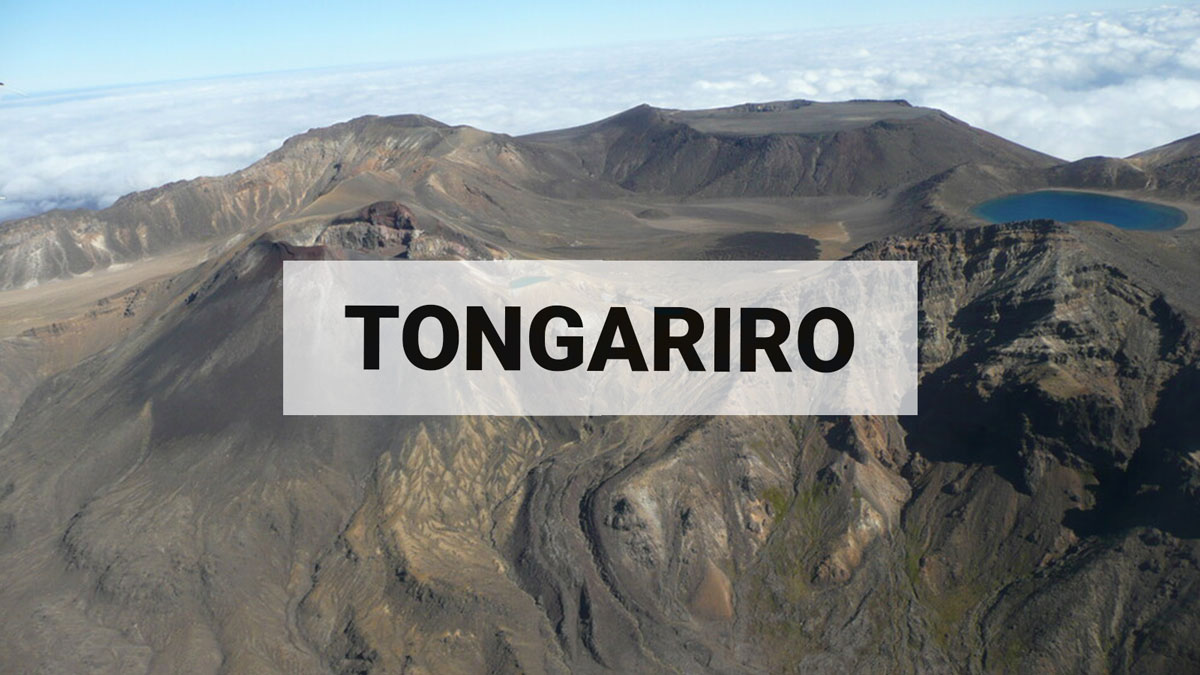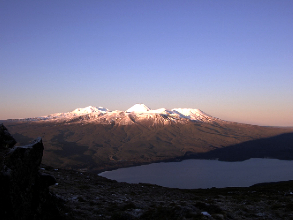
Volcanic unrest at Mt Tongariro is over - Volcanic Alert Level lowered to Level 0
Volcanic unrest at Tongariro (Te Maari) has declined steadily since the eruptions in 2012.
All monitoring indicators suggest that the unrest episode that triggered the 2012 eruptions is now over. While high temperature fumaroles are still present at the Te Maari crater, chemical analyses suggest that the gases are mostly from the hydrothermal system (steam); the heat is sustained from cooling magma remnants at depth. GNS Science lowered the Volcanic Alert Level to 0 (no volcanic unrest) from Level 1 (minor unrest).
Since Tongariro last erupted in November 2012, the activity at the volcano has been steadily declining. For example, shallow volcanic earthquakes are now extremely rare or absent and are of a similar number to pre-2012 levels. GNS Science staff has made numerous visits to the volcano to measure the temperature and sample the gases within the fumaroles. Analysis of these gas samples show a steady decline in the magmatic contribution within them, which means that the fumaroles are now dominated by hydrothermal fluids (heated ground water i.e., steam). There is a large hydrothermal system under Mt Tongariro that supports the surface features at places like Ketetahi, Te Maari, Red and Central craters. In addition, the automated sulphur dioxide (SO2) gas detectors (FlySpec) jointly operated by DOC and GeoNet since April, have barely recorded any SO2, a major indicator of volcanic gas rising from depth. The gas levels are basically at or below detection levels. Taken together, these results indicate that the minor unrest present since the 2012 eruptions has declined significantly. The steam plume that emanates from the Te Maari vent (like the one from Ketetahi) is likely to remain active for the foreseeable future.
"The Volcanic Alert Level was raised to Level 1 from Level 0 on July 20, 2012 largely due to the increased earthquake activity beneath the volcano. This was the first signs of volcanic unrest at that time”, said Dr Nico Fournier Head of Volcanology GNS Science. “On August 6, 2012 Tongariro erupted from the Te Maari vent(s) in a series of short explosions, impacting the local area. Later that year on November 21, the volcano erupted again through the same vent area” said Dr Fournier. Since the November 2012 eruption, Tongariro has been at Volcanic Alert Level 1. “We now consider the volcanic unrest associated with the 2012 eruptions to be over, hence the Volcanic Alert level is being lowered to Level 0”, said Dr Fournier from GNS Science.
GNS Science has now lowered the Volcanic Alert Level to 0 from Level 1. GNS Science continues to closely monitor Tongariro and our other active volcanoes through the GeoNet project. The Volcanic Alert Level ranges from 0 to 5 and defines the current status at a volcano. The Aviation Colour Code for Tongariro remains at Green. Aviation Colour Codes are based on four colours and are intended for reference only in the international civil aviation community.
Geoff Kilgour Duty Volcanologist

